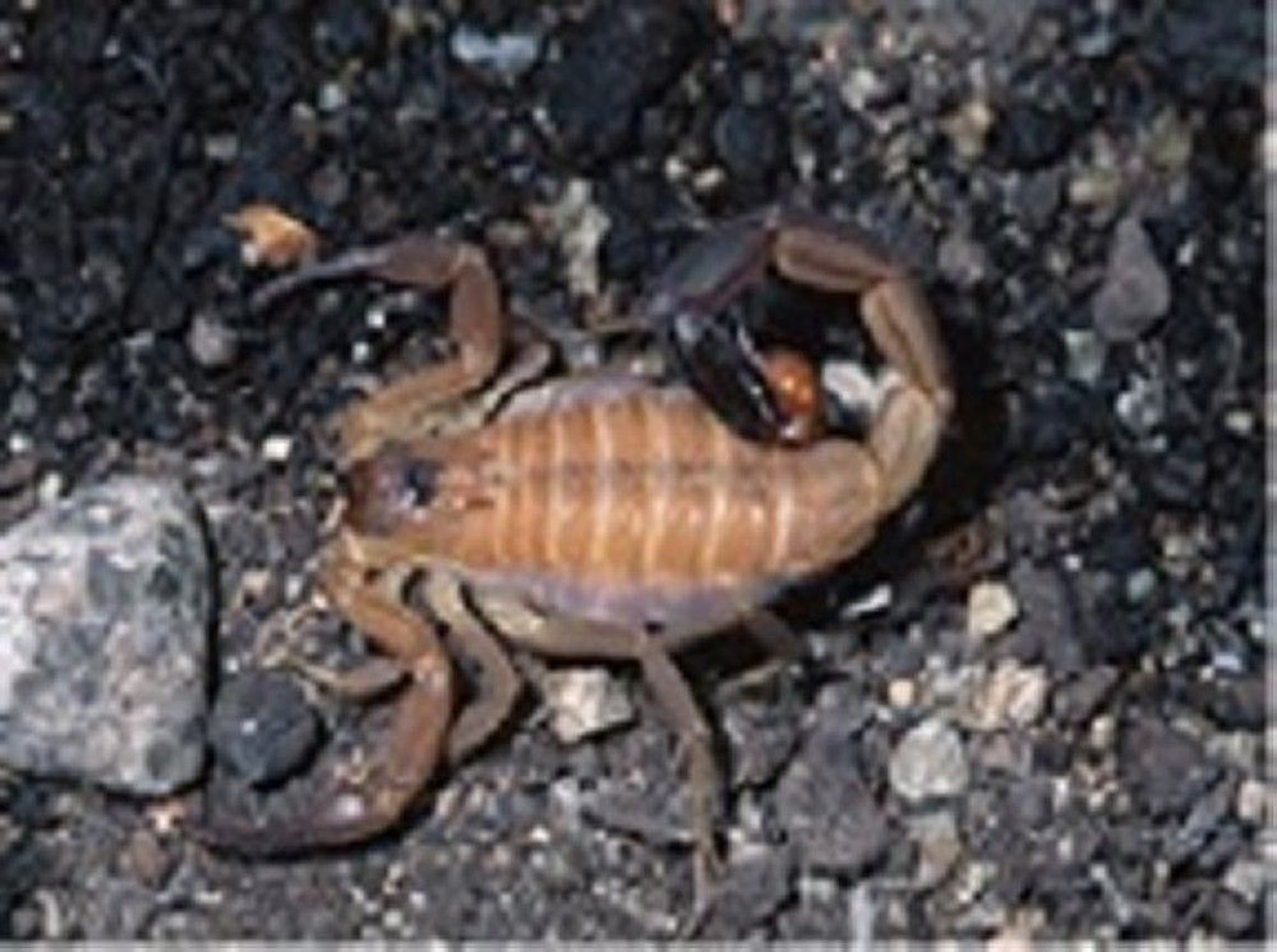- Introduction to Bites and Stings
- Human Bites
- Animal Bites
- Alligator, Crocodile, and Iguana Bites
- Lizard Bites
- Snakebites
- Centipede and Millipede Bites
- Bee, Wasp, Hornet, and Ant Stings
- Insect Bites
- Puss Moth Caterpillar Stings
- Mite Bites
- Scorpion Stings
- Spider Bites
- Tick Bites
- Jellyfish Stings
- Octopus, Squid, Snail, and Other Mollusk Stings
- Sea Urchin Stings
- Stingray Stings
Topic Resources
The stings of North American scorpions are rarely serious and usually result in pain, minimal swelling, tenderness, and warmth at the sting site. However, the bark scorpion (Centruroides exilicauda or C. sculpturatus), which is present in Arizona and New Mexico and on the California side of the Colorado River, has a much more toxic sting. The sting is painful, sometimes causing numbness or tingling in the area around the sting. Serious symptoms are more common in children and include
Abnormal head, eye, and neck movements
Increased saliva production
Sweating
Restlessness
Some people develop severe involuntary twitching and jerking of muscles and very high blood pressure. Breathing may become difficult.
Image courtesy of the Public Health Image Library of the Centers for Disease Control and Prevention.
(See also Introduction to Bites and Stings.)
Treatment of Scorpion Stings
Relief of pain
Sometimes relief of high blood pressure
Sometimes antivenom
The stings of most North American scorpions require no special treatment. Placing an ice cube wrapped in plastic and a thin cloth on the wound reduces pain. A cream or ointment containing an antihistamine, an anesthetic, a corticosteroid, or a combination of them is often useful.
Centruroides stings that result in serious symptoms may require the use of sedatives given intravenously or medications to lower high blood pressure. Centruroides antivenom rapidly relieves symptoms, but it may cause a serious allergic reaction. The antivenom is available only in the United States. It is given only if symptoms are severe.
In areas of the world where scorpions are more poisonous, such as Turkey, the Middle East, and India, stings are treated with medications and methods that reduce symptoms and complications. Sometimes medications are needed to relieve serious breathing difficulty due to extreme high blood pressure. Antivenoms to specific scorpion venoms are available and are sometimes used in very severe cases.


